Group in Focus: Kakiarts
Written by Adok/Hugi

Kakiarts Technologies is a German demo group. It was founded quite a long time ago by biff, who originally was into game coding before he discovered the demoscene. The first demo of Kakiarts, The Day of Tannenberg, was released in the seventh year of Kakiarts' existence. A Pentium processor with 90 MHz, 16 MB RAM and a mere VGA graphics card were the modest requirements for this demo, which had been crafted with Watcom C++ and Assembler. The demo showed what life was like at biff's school; maybe it would have reminded you of your own school.
Kakiarts grew in the course of the years, new members joined it, and more, and better, releases came out all the time. Nowadays the members of Kakiarts are:
- Coders: biff, jk, KeyJ. (KeyJ is responsible for most of the newer productions of Kakiarts.)
- Graphicians: Baerb, Faline, Gabi. (All three of them female.)
- Musicians: dq, noizyveit, Tristan.
I'm now going to review some of the (IMHO) most interesting releases of Kakiarts throughout the years.
PostShrink (2005)
With PostShrink, Kakiarts did some real pioneer work. PostShrink is the first - and probably still only - "4k intro" in the form of a PostScript (.ps) document. It was made for the vector graphics competition of The Ultimate Meeting 2005, which was cancelled due to a low number of entries, and therefore it was released in the pixel graphics compo. The script generates a static image showing several 3D objects: letters, a Sierpinski triangle, a torus, a deformed (wobbled) cube, a sphere and something that looks like a hill landscape in the background. The colours are very pleasant, and thus it's not only technically impressive, but also aesthetically attractive. For this production, KeyJ invented his own wrapper language, called PrePost. It is similar to PostScript, but it simplifies the coder's life. While PostScript stores all "local variables" on a stack and you can only access them by using push and pop commands, the syntax of PrePost allows to access the variables in the same way you would do in a higher-level programming language such as C. In addition, PrePost permits using a prefix notation instead of PostScript's postfix notation, so e.g. "1 2 3 mul add" becomes "add(1,mul(2,3))", which is clearly easier to read. KeyJ created a Python script that converts the PrePost code to the final PostScript and optimizes it by removing comments and unnecessary whitespace. This script and the PrePost code are included in the PostShrink archive available from the Kakiarts website. In short, it's a very compact 3D engine and a fine collection of applications of it.
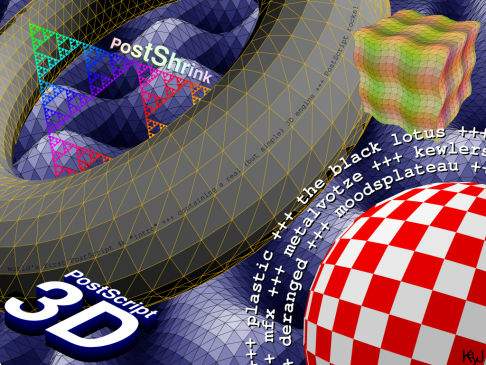
8bit Wonderland (2007)
8bit Wonderland was Kakiarts' contribution to the demo competition at Evoke 2007, where it won first place. The demo, which has been coded by KeyJ and which uses music by dq and graphics by Gabi, starts with a Super Mario scene, followed by a Pong scene. Then you get to see an island with a forest, and after this comes one of the most acclaimed parts of this demo: the Tetris scroller in which the greetings to other groups are
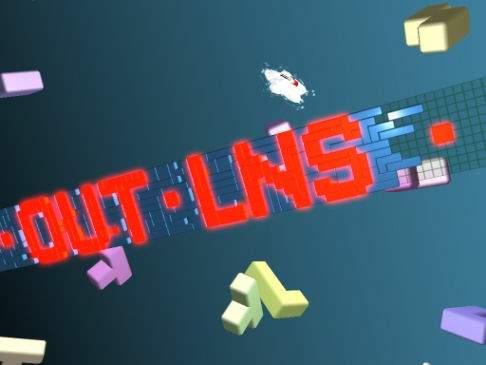
displayed.
I was curious and asked KeyJ about the making of this scroller. He told me that the Tetris patterns used to form the names of the groups were selected by a Python script, which took about five hours. So the patterns are precalculated, but the displaying of the scroller happens in real-time.
After the greetings we see a 3D car racing scene with the credits. The names and pictures of the people involved in this

production are displayed on signs at the border of the streets. Next comes a scene inside a cube. The six faces of the cube have old posters about 8bit home computers on them. This scene is followed by a Nibbles scene, in which you see a 3D "snake" chasing yellow balls until it bites its own body. Around the snake you can see enlarged bitmaps showing some of the video game heroes of the 1980s (Bomberman, Mario etc.).
The next scene shows a cannon placed in the middle of a city. It shoots and hits buildings, which causes a release of loads of flowers. Then, finally, a Game Over screen is displayed. The demo zooms out, and we see that "Game Over" was written on the screen of a Nintendo Game Boy, which is used by some child drawn by Gabi.
The theme of this demo has reminded me of "Insert Coins" by Traction, which was first presented at TUM 2005. But in my humble opinion, the demo by Kakiarts does a much better job at conveying the feeling of the 1980's 8bit video game era.
BlockOut (2005)
KeyJ also made some games. One of them is the 8k version of the Electronics Art classic "BlockOut", a kind of 3D tetris. Instead of filling lines, you have to fill layers. Once a layer is filled, it is cleared up and you get points. The game was released in the tUM 2005 game compo, where it got second place. What's worth mentioning is that it's possible to change the pit size from 3x3x12 to 20x20x12. Thus the difficulty level can be adapted well to the player's skills. The controls are very intuitive and all in all the gameplay is nice.
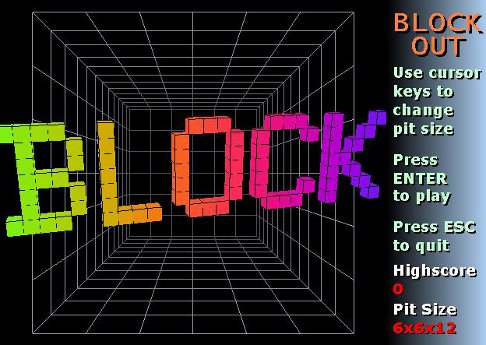
Kakiarts 8-Ball (2007)
Another game coded by KeyJ is 8-Ball, which was made for Breakpoint 2007 where it came third in the game compo. This game is an implementation of billiards in 77k. There is also a minimal variant in just 14k, lacking the music by dq and Gabi's graphics. Unfortunately, neither version seems to work on Windows Vista. According to KeyJ, the reason is: "The 80k version doesn't work because of the old version of the V2 synthesizer used, and the 13k version doesn't work because of the old version of Crinkler used. However, the latter one could possibly be fixed with Crinkler's built-in Vista/7 fixing feature."

3 Igel (2001)
This funny short demo mostly consists of scanned paper drawings. You see three hedgehogs trying to cross the street, failing miserably. The graphics were drawn by Gabi, and the code was done by Biff. Kakiarts later also made a 64k intro called "3D Igel" based on the same story.
Discocubes (2006)
For the fast coding competition at tUM 2006, Biff and KeyJ coded a short demo involving "dancing" magic cubes. Great illumination and shading effects, good music by dq!

Vortex 2 (2008)
Kakiarts made several 64k intro. Their latest 64k is "Applied Mediocrity", which won 1st place at Evoke 2009. A year before that, "Vortex 2" got 1st at Evoke 2008. It contains scenes with gearwheels, magnets and a clock. The initial 3D text scroller and the tunnel with the orange gear are the aesthetically most impressive parts of the intro, IMHO.

Graphics and Music
Kakiarts also released a musicdisk, the Bassmeister EP. The pictures by Gabi and generated images are also worth looking at.
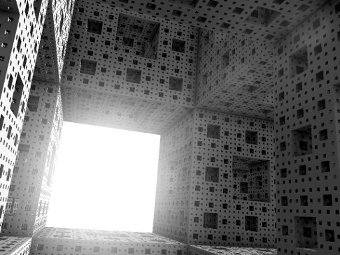
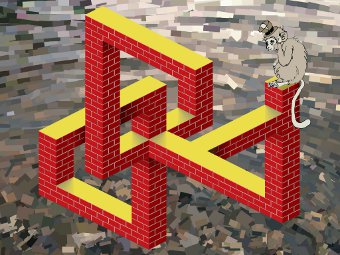


nano (2006)
Finally, let's introduce "nano". KeyJ considers nano the "greatest achievement" of Kakiarts so far. It's the first demo made for the Apple iPod nano 1G, "the second smallest device that ever has been made a demo for". There are also Linux and Win32 versions of this demo. With its rotating globe and moving red blood cells, it has some beautiful scenes to offer to the watcher.

Conclusion
Kakiarts is a demogroup which is perhaps not as well-known as e.g. Farbrausch, but still quite productive and releasing interesting demos, intros, graphics, music and games from time to time.
Links related to this article
Kakiarts official website
Adok/Hugi













